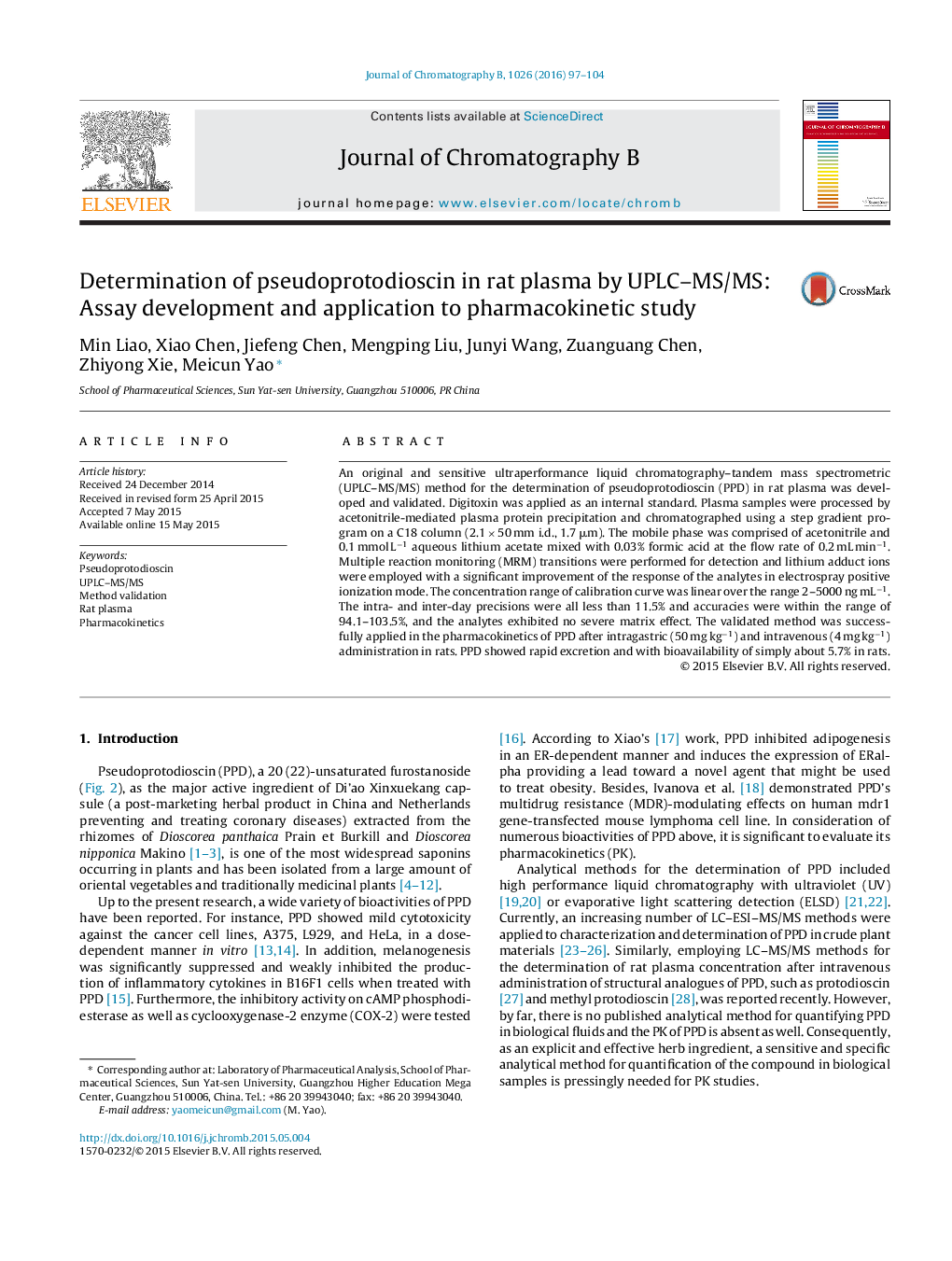| Article ID | Journal | Published Year | Pages | File Type |
|---|---|---|---|---|
| 1211781 | Journal of Chromatography B | 2016 | 8 Pages |
•Novel UPLC–MS/MS method for quantification of pseudoprotodioscin in rat plasma.•Lithium adduct ions were employed to enhance the response of the analytes.•First PK studies of the chemical by oral and intravenous administration in rats.•The analyte turned out to be rapid excretion and low bioavailability in rats.
An original and sensitive ultraperformance liquid chromatography–tandem mass spectrometric (UPLC–MS/MS) method for the determination of pseudoprotodioscin (PPD) in rat plasma was developed and validated. Digitoxin was applied as an internal standard. Plasma samples were processed by acetonitrile-mediated plasma protein precipitation and chromatographed using a step gradient program on a C18 column (2.1 × 50 mm i.d., 1.7 μm). The mobile phase was comprised of acetonitrile and 0.1 mmol L−1 aqueous lithium acetate mixed with 0.03% formic acid at the flow rate of 0.2 mL min−1. Multiple reaction monitoring (MRM) transitions were performed for detection and lithium adduct ions were employed with a significant improvement of the response of the analytes in electrospray positive ionization mode. The concentration range of calibration curve was linear over the range 2–5000 ng mL−1. The intra- and inter-day precisions were all less than 11.5% and accuracies were within the range of 94.1–103.5%, and the analytes exhibited no severe matrix effect. The validated method was successfully applied in the pharmacokinetics of PPD after intragastric (50 mg kg−1) and intravenous (4 mg kg−1) administration in rats. PPD showed rapid excretion and with bioavailability of simply about 5.7% in rats.
